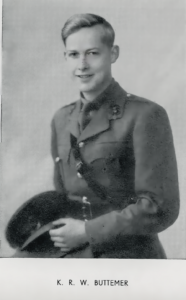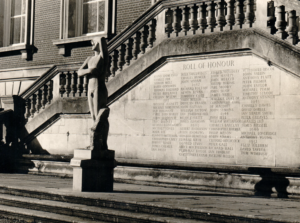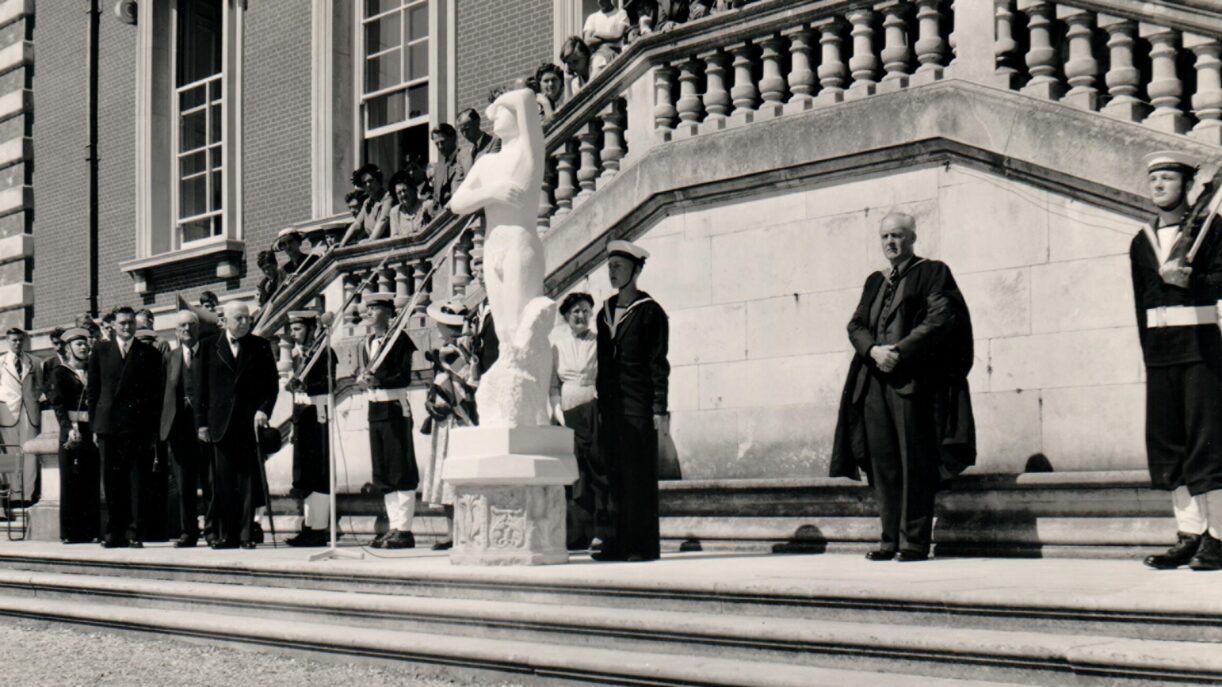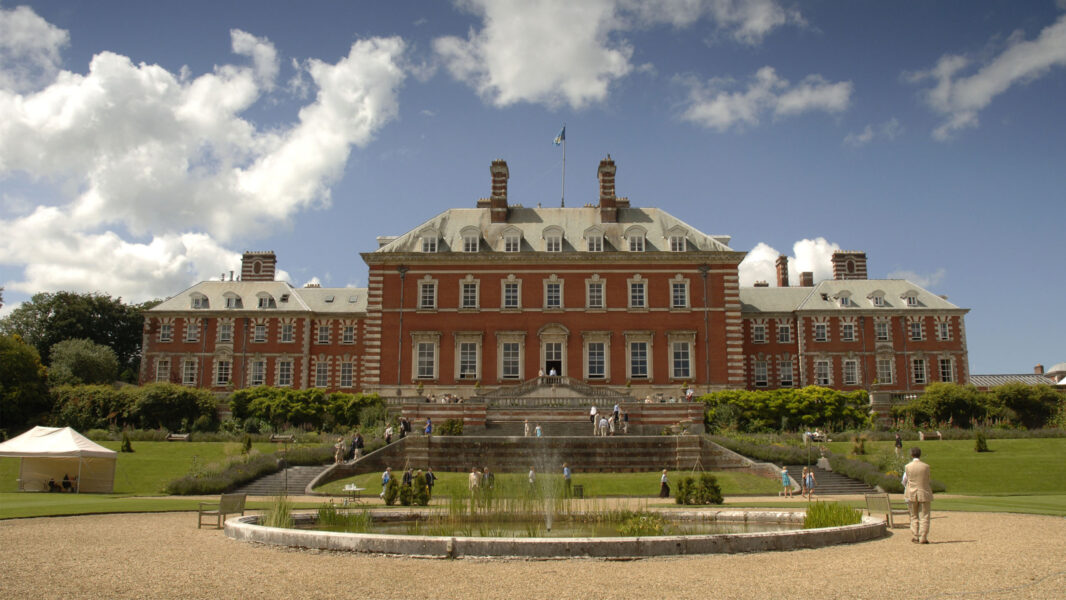In our latest blog post, Archivist Laura Sweetenham reflects on Remembrance Day over the years, exploring OB connections with military history.
Remembrance Day is our time to honour and remember the service and sacrifice of those who gave their lives fighting for our country. For Bryanston, it has become a moment of shared experience that includes pupils, staff and OBs alike; a time of reflection which powerfully connects generations of the Bryanston family.
In a rapidly changing world, the need to remember the lessons of history has never been more important. The stories of OBs offer a potent link to the past, reminding us of the cost of conflict, the value of peace and the enduring importance of service to others.
We will remember them.
Looking back, the Autumn term of 1939 was understandably a little different to normal with Bryanston unable to escape the effects of the onset of war. The basement was gas-proofed with blankets and refuge rooms and all the windows and skylights were blacked-out. Fire drills became air raid practice with everyone descending to the basement and the majority of the staff became Air Raid Wardens.
The wider impact of the war was highlighted by the evacuation of schools from high-risk areas. Many schools were struggling to maintain admissions due to their precarious locations and Bryanston was approached by several Prep schools to provide shelter should the need arise. Dane Court, Gayhurst and Port Regis schools were all warmly welcomed and accommodated at different times.
Port Regis evacuated from its home in Broadstairs, Kent and resided in the Hardy Wing for five years before moving to Motcombe House, near Shaftesbury. In this time, a close bond had formed with this school, being known as ‘Bryanston Junior School’ until the 1970s.
There has been a military presence in Blandford for hundreds of years, but this too became all the more visible as parts of the school estate were requisitioned. Significantly, the Main Drive and Old Stables were signed over for use by the War Department in early 1940. OBs tell of the camouflaged vehicles and tents of American troops who all dramatically vacated just before D-Day, June 1944.
The daily routines of school life at Bryanston were maintained with clubs and societies flourishing but it was not long before the first OBs and teachers were called up.
One such OB was Kenneth Robert William Buttemer (Hardy 1934-39). A true Bryanstonian, taking a full and active part in school life, his English teacher Aubrey de Selincourt wrote:

“Kenneth had both quickness and humility of mind: he was modest, kindly and affectionate: he had a wide influence in things, in ideas, and in people. Never arrogant, inclined rather to self-distrust, he was beginning when he left school to win independence of mind. The world was all before him. Two months before his death he wrote to his friends at school a letter full of zest and happiness in the richness and excitement of his new experiences. Had he lived longer, he would have lived fully. His death is a profound loss to his many friends and to the School.”
Enlisting in July 1940 and after Officer Cadet training, he was posted to No.88 Heavy Anti-Aircraft Regiment and sent to the Middle East in June 1941.
In the Autumn of 1941, the regiment defended the landing zones of the Desert Air Force in preparation for Operation Crusader, the Eighth Army’s offensive in the Western Desert to break the siege of Tobruk. He suffered acute appendicitis and on 29 October 1941 he died in hospital at Suez following an operation.
His Colonel wrote of him: “He was the youngest officer in the Regiment and a great favourite in his Battery. With his attractive personality I had it in mind to make him Regimental Orderly Officer after a little more experience at the guns.” His adjutant added: “Into the lives of all of us he brought the eternal promise of youth and a charm which was peculiarly his own.”
In his memory, Kenneth’s Bryanston friends gifted a Memorial Book inscribed with the names of the OBs who gave their lives in the war, together with the names of those decorated for distinguished service.; all demonstrating character, integrity and resilience. A reminder not only of personal loss but also the enduring qualities of the individual.
To further ensure there was a lasting tribute to those who gave their lives fighting for the country, a War Memorial Fund was established in 1945. This ambitious campaign would provide, not only a physical memorial but also secure the financial future of the school.

On the terrace the memorial took the form of a statue carved by Dutch artist and OB Parent, Titus Leeser. The sculpture of a figure looking skywards was unveiled at Speech Day in 1953 by Headmaster, Thorold Coade:
“‘if we need a figure to symbolise, in one swift gesture, all we stand for, I can think of none more inspiring … A youth, just on the threshold of manhood, wholly vulnerable, but careless of the fact because he is not looking at himself but lifting his eyes to far horizons, a figure unhampered by the defensive armour of convention, his eyes unclouded by the spectacles of prejudice and fear, resolutely seeking the truth, so he might live in the light of it, in a spirit of absolute commitment. One hand is shielding his eyes from the brightness of the vision, and the other is on his heart, the seat of human affection, indicating a truth men have not yet grasped – that a sense of duty is not enough. Public service, the watchword of the ancient English public school, is not a sufficiently strong ideal to set the world right, unless it is animated by love.’
On 11 November we will gather on the terrace at the School War Memorial. Lest we forget.




